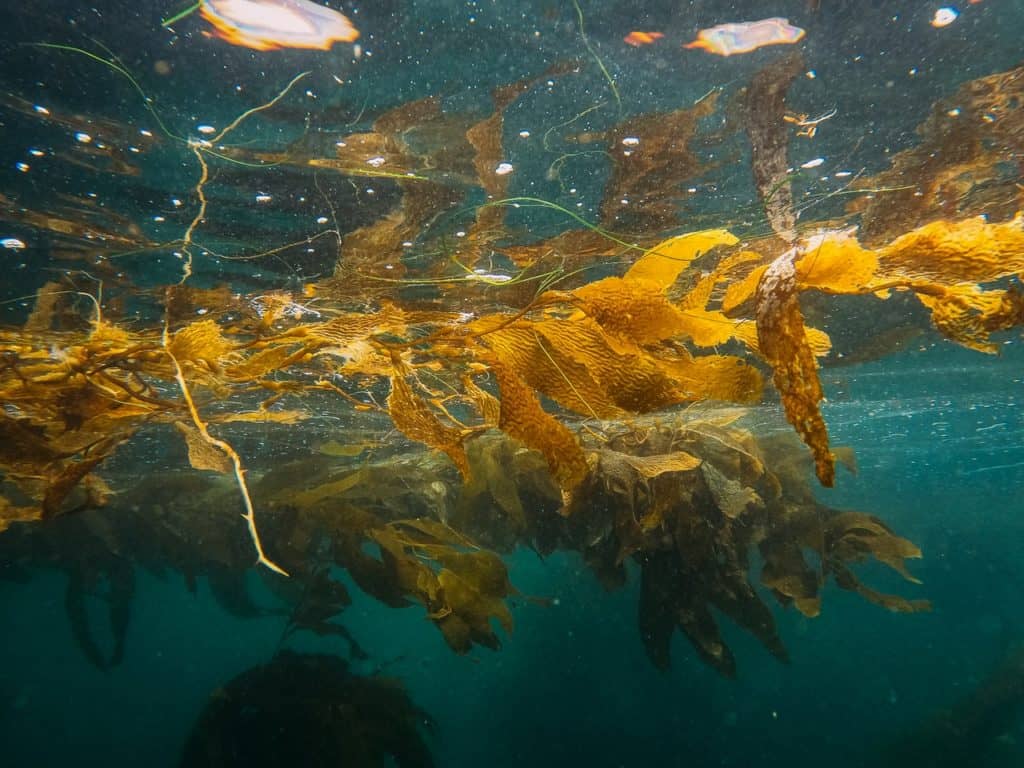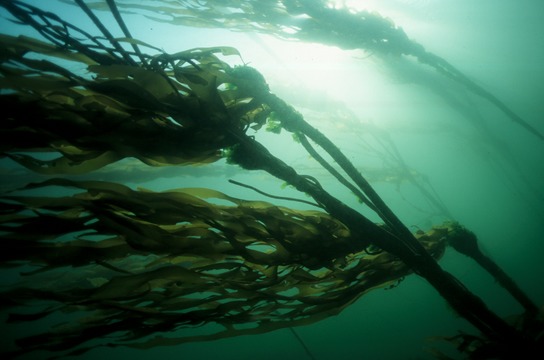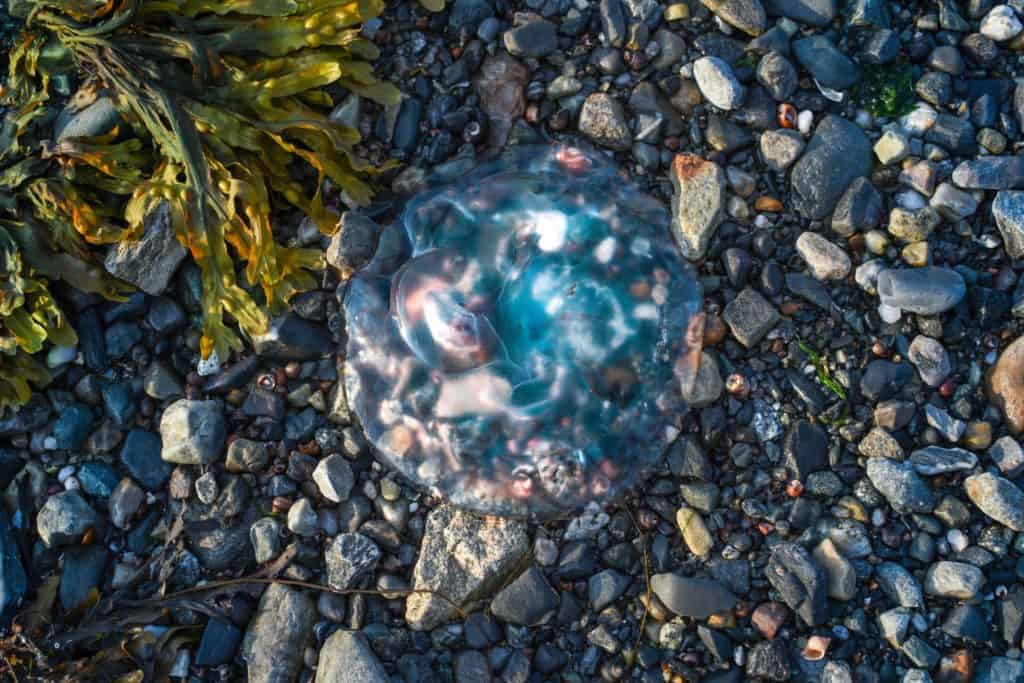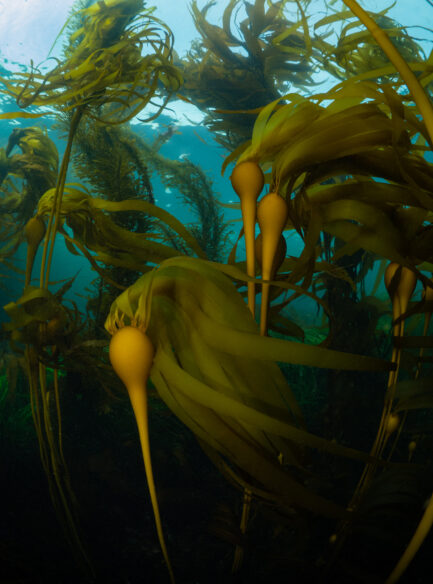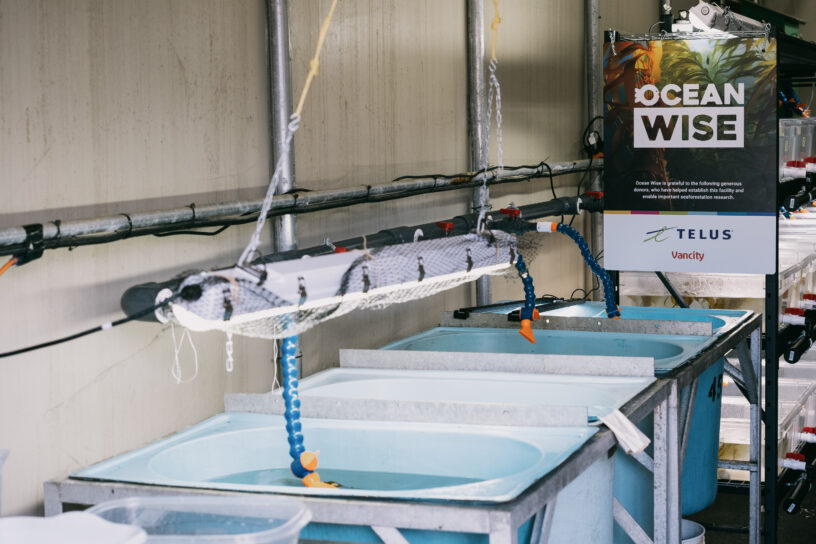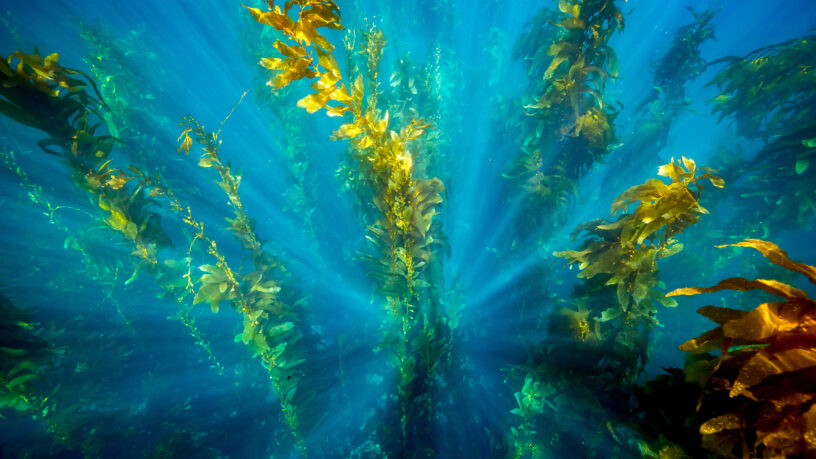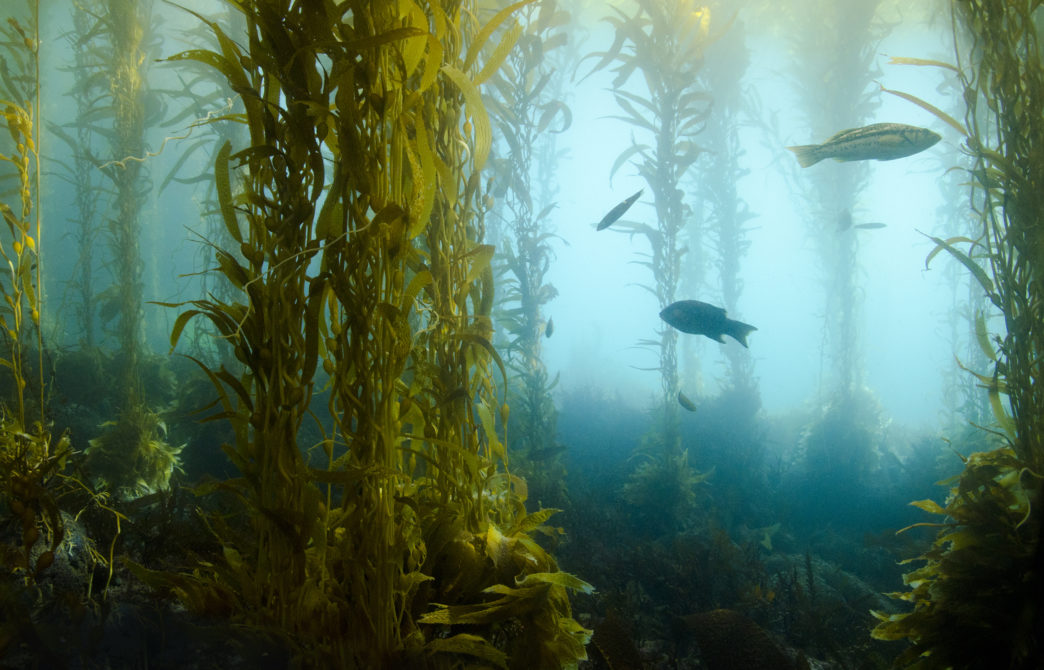
Growing a kelp forest: Updates from Rainy Bay
How easy is it to grow a kelp forest? This is the question Ocean Wise’s Seaforestation initiative is answering as they develop and test cost-effective kelp restoration techniques that can be applied at scale across the world. This is no small task and, if successful, could help counter one of the most pervasive threats to the ocean, the global decline of kelp forests. It’s estimated that 40-60% of kelp forests across the world are in decline. With this work underway Ocean Wise is testing innovative ways to measure the impact kelp restoration has on biodiversity, using Environmental DNA (eDNA) methods. The team has developed a Phase 1 research update sharing a glimpse into how this work is progressing.
In late 2021, Ocean Wise initiated our first in-water project for kelp forest restoration in Rainy Bay (Nuu-chah-nulth territory, Barkley Sound, Vancouver Island). We in collaboration with our partners, Canadian Kelp Resources and Rendezvous Dive Adventures we used green gravel technology to seed a 200m2 transect with three local kelp species (bull kelp, sugar kelp and giant kelp). This innovative technique has great potential to widely scale kelp restoration for communities, but there are gaps in our understanding of the best practices and methods for restoring species such as bull kelp, which are the most threatened by warming oceans on the Pacific coast.
Our project in Rainy Bay offers us the opportunity to close some of these knowledge gaps and identify areas for further research for scaling restoration efforts in British Columbia and then globally
In September 2022, our dive team visited the green gravel transects at Rainy Bay to assess the growth that took place over the summer. From a previous visit in early spring, the dive team expected the results to be mixed, but at the Macrocystis (giant kelp) transect, they found a large kelp forest had sprung up and flourished over the summer, directly between the 25m and 75m stretch of our transect. During this survey, our divers also noticed a high density of life, from large schools of perch to a couple of juvenile sunflower stars – a species that was decimated by the Sea Star Wasting disease a few years before.
Swim through our green gravel giant kelp forest here: https://youtu.be/_vkxgQaRv10
“I observed huge amounts of varieties of juvenile perch species. In addition, the small sunflower starfish that were observed earlier this year are now larger in size and seem to benefit from kelp. These starfish had previously been wiped out by a virus and being one of the major predators of the urchins who eat kelp this is an encouraging sign. In general, the biodiversity that was previously observed remains the same in number of species but the increase in fish density is remarkable.” – Peter Mieras: scientific diver, videographer, and local resident
While the second transect, planted with Nereocystis (bull kelp) did not show any significant growth of kelp by September 2022, findings will help guide future research for green gravel kelp restoration. More exploration into the life stages of this species is being conducted to understand the reason behind lack of growth.
A biodiversity “snapshot”
To better measure the impacts of kelp restoration on local biodiversity, the team launched an innovative survey at the green gravel restoration site in Rainy Bay using environmental DNA to establish the baseline of biodiversity before the expected growth of kelp on the transects.
The eDNA sampling technique was used to take a “snapshot” of the presence or absence of certain species by collecting genetic material floating around in the water (i.e. fish bits, traces of skin, scutes, etc. ). This DNA is then enhanced, analyzed and compared against a database of local species to determine what was present in the water around the time of collection.
eDNA is already used extensively in Ocean Wise’s work with humpback whales and porpoises, to determine population dynamics and even identify whales down to the individual! You can read more about this work in another Ocean Wise Blog post. However, deploying eDNA to create reliable, accurate biodiversity snapshots is still a work in progress. We’ve captured our preliminary findings in a phase 1 report that can be found here.
Our first round of eDNA analysis successfully identified many of the species observed by divers in addition to other such as Pacific Herring. Unfortunately, some samples had high levels of contamination from human DNA. With this knowledge, we improved our methodology and deployed eDNA frames for a second time in fall 2022 with high hopes for improved data quality – and for a measure of species diversity after the successful growth of kelp.
Future Directions
Overall, the success from our first year of green gravel trials is exciting: it is now demonstrated that green gravel can be used to propagate giant kelp in British Columbia waters. We will continue to monitor the site moving forward to understand the dynamics of our newly restored kelp bed. We look forward to building on the strengths and weaknesses identified by the first stage of our green gravel pilot project, and using the lessons learned to advance our efforts to restore this critical ocean habitat. Results from this pilot will help us launch larger scale projects in British Columbia and contribute to restoration best practices that can maximize restoration and carbon sequestration potential of kelp on a wider scale.
Posted February 2, 2023 by Nic Schulz
